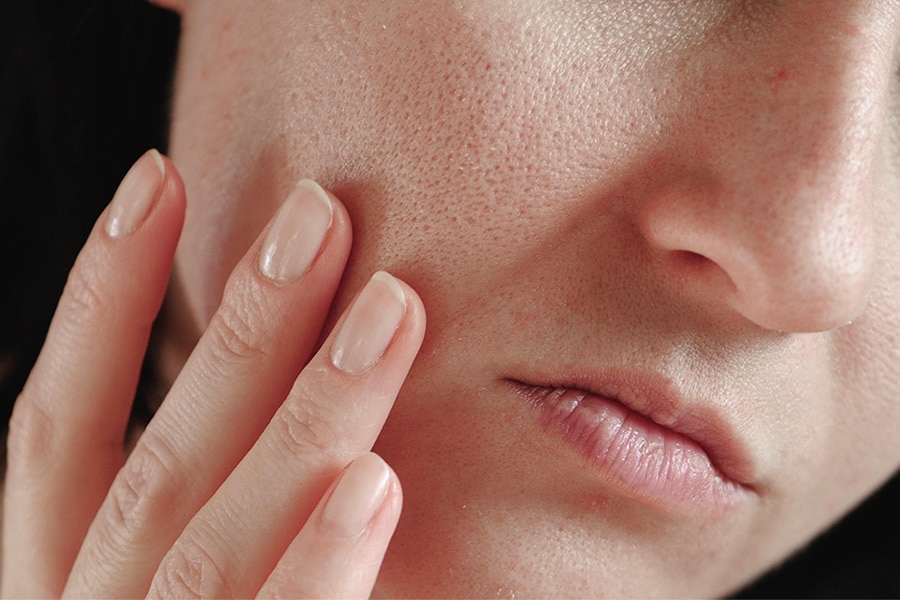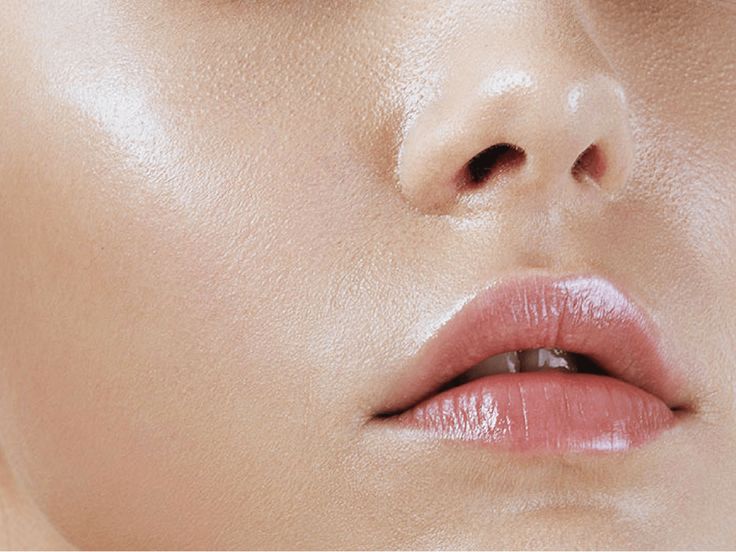Winter’s chill brings a unique set of challenges to our skin. The drop in temperature, combined with harsh winds and dry indoor heating, can wreak havoc, leaving skin feeling tight, itchy, and dull. But fear not! Understanding your skin type and tailoring your skincare routine accordingly is the key to maintaining a healthy, radiant complexion throughout the winter months. This comprehensive guide will help you decode your skin type and provide essential winter skincare tips to conquer the cold and keep your skin glowing.
Understanding Your Skin Type
Before diving into specific winter skincare routines, it’s crucial to accurately identify your skin type. Each skin type has unique characteristics and needs, and using the wrong products can exacerbate existing problems or even create new ones. Here’s a breakdown of the main skin types:
- Dry Skin: Dry skin feels tight, rough, and may flake. It lacks moisture and natural oils, making it particularly vulnerable to the drying effects of winter. Fine lines are often more noticeable, and the skin may feel uncomfortable, especially after cleansing.
- Oily Skin: Oily skin has a shiny appearance and a tendency to break out. It produces excess sebum, which can lead to clogged pores, blackheads, and acne. While oily skin might seem less affected by winter’s dryness, it still requires proper care to maintain balance.
- Combination Skin: Combination skin is characterized by having both oily and dry areas. Typically, the T-zone (forehead, nose, and chin) is oily, while the cheeks are dry. This skin type requires a balanced approach to address the different needs of each area.
- Sensitive Skin: Sensitive skin is easily irritated by products and prone to redness or reactions. It can be dry, oily, or combination, but it always reacts negatively to harsh ingredients, fragrances, or environmental factors. Winter can further exacerbate sensitivity, making it crucial to choose gentle, soothing products.
General Winter Skincare Tips for All Skin Types

Regardless of your skin type, certain winter skincare practices are beneficial for everyone:
- Hydrate from Within: Drink plenty of water throughout the day to keep your skin hydrated from the inside out. Winter air is dry, so internal hydration is even more important than usual.
- Use Lukewarm Water: Avoid washing your face with hot water, as it can strip your skin of its natural oils. Opt for lukewarm water instead.
- Pat, Don’t Rub: When drying your face, gently pat your skin with a soft towel instead of rubbing, which can cause irritation.
- Humidify Your Home: Use a humidifier to add moisture to the air, especially in your bedroom. This can help combat the drying effects of indoor heating.
- Protect with Sunscreen: Don’t forget sunscreen! The sun’s rays can still damage your skin in winter, especially on sunny days. Choose a broad-spectrum sunscreen with an SPF of 30 or higher.
Winter Skincare Routine for Dry Skin

Dry skin needs extra hydration and nourishment during the winter months. Here’s a recommended routine:
1. Gentle Cleansing: Use a creamy, hydrating cleanser that won’t strip your skin of its natural oils. Avoid harsh soaps or foaming cleansers.
2. Hydrating Toner: Apply a toner that contains hydrating ingredients like hyaluronic acid or glycerin. Avoid alcohol-based toners.
3. Rich Moisturizer: Use a heavy, creamy moisturizer to lock in moisture and protect your skin from the cold. Look for ingredients like shea butter, ceramides, and hyaluronic acid.
4. Facial Oil: Adding a facial oil can provide an extra boost of hydration. Apply a few drops after your moisturizer.
5. Hydrating Mask: Use a hydrating mask once or twice a week to deeply nourish your skin.
6. Night Cream: Apply a rich night cream before bed to replenish moisture overnight.
Winter Skincare Routine for Oily Skin

Even oily skin needs hydration in winter, but it’s important to choose lightweight, non-comedogenic products:
1. Gentle Cleansing: Use a gentle, non-comedogenic cleanser to remove dirt and oil without irritating your skin.
2. Lightweight Toner: Use a toner to balance your skin’s pH levels and prepare it for moisturizer.
3. Oil-Free Moisturizer: Choose a lightweight, oil-free moisturizer to hydrate your skin without clogging pores.
4. Balancing Serum: A serum with niacinamide can help manage oil production and prevent breakouts.
5. Exfoliate Regularly: Exfoliate once or twice a week to remove dead skin cells and prevent clogged pores.
6. Clay Mask: Use a clay mask once a week to absorb excess oil and impurities.
Winter Skincare Routine for Combination Skin

Combination skin requires a balanced approach to address both oily and dry areas:
1. Gentle Cleansing: Use a gentle, moisturizing cleanser that cleanses without stripping the skin of its natural oils.
2. Targeted Toner: You might need to use different toners for different areas of your face.
3. Multi-Moisturize: Use a lighter, oil-free moisturizer on oily areas like the T-zone and a richer cream on drier areas like the cheeks.
4. Spot Treatments: Use spot treatments for any breakouts that occur.
5. Hydrating Mask: Apply a hydrating mask to drier areas of your face.
Winter Skincare Routine for Sensitive Skin

Sensitive skin requires extra care and gentle products during the winter months:
1. Gentle Cleansing: Use a very gentle, fragrance-free cleanser specifically designed for sensitive skin.
2. Hydrating Toner: Choose a toner with soothing and hydrating ingredients like aloe vera or chamomile. Avoid toners with alcohol or fragrances.
3. Soothing Moisturizer: Use a moisturizer with calming ingredients like ceramides and peptides.
4. Facial Oil (Optional): A gentle facial oil can provide extra hydration and protection, but test it on a small area first to ensure it doesn’t cause irritation.
5. Avoid Harsh Exfoliants: Use a very gentle exfoliator or skip exfoliation altogether if your skin is particularly sensitive.
6. Patch Test New Products: Always patch test new products on a small area of skin before applying them to your entire face.
The Importance of Exfoliation
Exfoliation is a crucial step in any winter skincare routine, regardless of your skin type. It helps to remove dead skin cells that can accumulate faster in the winter, allowing your moisturizers to penetrate more effectively. However, it’s important to exfoliate gently and not overdo it, as over-exfoliation can worsen dryness and irritation. Stick to exfoliating once or twice a week with a mild scrub or an exfoliant with ingredients like lactic acid or salicylic acid. For sensitive skin, opt for a very gentle exfoliator or consider using a soft washcloth to gently buff away dead skin cells.

The Role of Korean Skincare
Korean skincare, also known as K-beauty, has gained immense popularity worldwide due to its focus on gentle, hydrating, and nourishing ingredients. Many K-beauty products are specifically formulated to address the needs of different skin types and are perfect for combating the harsh effects of winter. Look for K-beauty products that contain ingredients like hyaluronic acid, ceramides, green tea, and snail mucin to hydrate, soothe, and protect your skin.
Conclusion
Winter doesn’t have to mean dry, irritated skin. By understanding your skin type and following a tailored skincare routine, you can keep your complexion healthy, hydrated, and radiant all season long. Remember to prioritize gentle cleansing, hydration, exfoliation, and sun protection. And don’t be afraid to incorporate K-beauty products into your routine for an extra boost of nourishment and hydration.
If you are interested in sourcing a wide range of authentic Korean skincare products, consider partnering with a reputable korean skincare wholesale exporter to ensure access to high-quality products at competitive prices. With the right approach, you can conquer the cold and keep your skin glowing all winter long.




